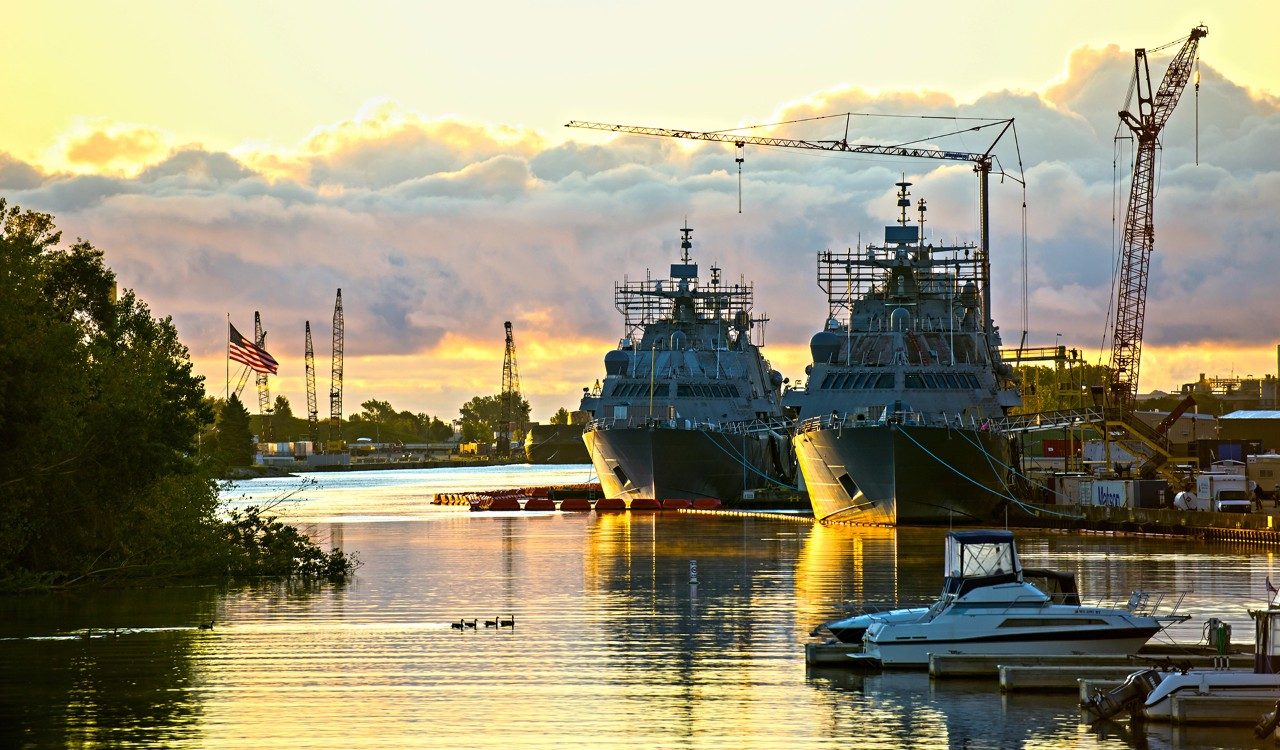Bringing Manufacturing and Jobs Back to the Heartland
Made In The Heartland: Building Ships and Jobs Throughout the Midwest
From its humble beginnings, Fincantieri Marinette Marine has grown into one of largest manufacturers in Wisconsin and Michigan’s upper peninsula. Today, it is the Midwest’s only naval shipyard and has become the economic epicenter of the region.
Every day, 2,500 Michigan and Wisconsin workers pass through its gates, put on their hard hats and build American warships. Partnered with Lockheed Martin, the shipyard has received orders for 13 Freedom-variant Littoral Combat Ships and delivered four ships to date.
With nine ships in production, LCS production has injected hundreds of millions of dollars into local economies throughout the Midwest. The program supports thousands of direct and indirect jobs throughout the Midwest, including more than 7,500 in Michigan and Wisconsin alone.
At the height of the Great Recession, Fincantieri invested over $120 million to modernize the shipyard, hire more than 1,000 people and train a new workforce. This private investment helped the shipyard achieve full-rate production and create new Midwest manufacturing jobs at a time when they were desperately needed.
Nationwide Team: Powering Job Creation Across America
The Freedom-variant Littoral Combat Ship is delivering more than just a resilient and capable vessel to the men and women of the United States Navy. As an added benefit for the nation's economy, it's simultaneously delivering more than twelve thousand high paying, high quality manufacturing to American workers across the country. It is also helping to bring manufacturing jobs and opportunity back to the United States and heartland communities.
According to standard industry accepted economic forecasting, the Freedom-variant LCS is responsible for more than 12,500 direct and indirect U.S. jobs. Equally impressive to the program's job creation prowess is the sheer size of its economic footprint. The Lockheed Martin LCS program teams with more than 800 domestic suppliers in 42 states to produce thousands of components from American-made steel to the ship’s highly sophisticated radar and weapon systems.
Maintaining the Momentum: New Orders Key to Affordability and Preserving Jobs

This year is a pivotal time as the Navy seeks to build toward a fleet of President Trump’s goal of 350 ships and as it transitions its small surface combatant from an LCS to a multi-mission frigate. The dedicated Midwestern workers of Fincantieri Marinette Marine are standing ready to build our Navy’s future frigate by adding significant, but affordable upgrades to the ship's lethality and survivability.
Costing less than a third of a brand new Arleigh Burke-class destroyer, the Littoral Combat Ship is the Navy’s most affordable surface combatant shipbuilding program and the ideal platform to grow the U.S. Navy fleet quickly and affordably. The Navy has stated that it needs 52 small surface combatants to meet national security requirements and had planned to build three ships this year to meet that need. Building less than three ships this year would have dangerous impacts both to national security and to manufacturing jobs. At the yard, immediate layoffs of some of the most highly skilled workers would occur. Reconstituting this skilled workforce would be tremendously difficult, expensive to taxpayers, and time-consuming.




